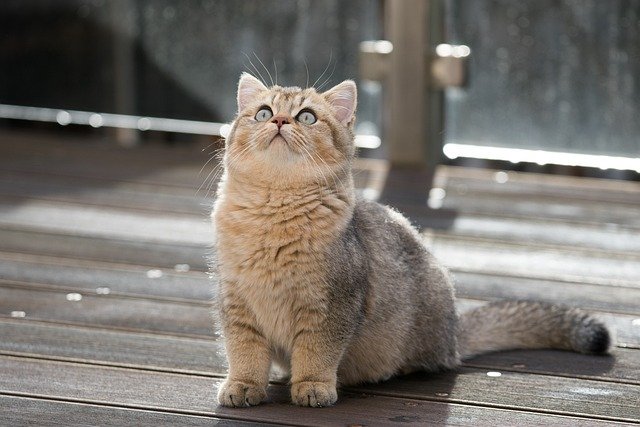Short British Cat, known as British shorthair cat, with high featuring plush coat, and round, placid, loving nature. This breed is the survivor of ancient times in the United Kingdom and is a popular choice as a companion. British Shorthairs are just lovely, but as you think of adopting a British Shorthair or you are a pet parent, it’s important you do so to know a few things about this breed to give your feline friend the healthiest and happiest life.
Key Characteristics of the British Short Cat
A Short British Cat is a medium to large cat with a stocky, well proportioned frame. Males typically weigh between 9 to 17 pounds and females between 7 and 12 pounds. They were easily spottable for their rounded face, large expressive eyes and dense short coat. Short British Cats were originally known for their blue (gray) coloring, but have many different color and pattern combinations, including white, black red, cream, tabby and many more.
Quick Facts:
- Personality: Affectionate, calm, and adaptable
- Size: Medium-to-large, with males being larger
- Coat: Short, dense, and easy to maintain
- Colors: A variety of shades and patterns
- Eye Color: Can range from gold to green or blue
- Life Expectancy: 12-16 years
- Hypoallergenic: No

History of the British Shorthair
The British Shorthair is one of oldest cat breeds in Britain, as early street cats made a big contribution to its development. These street cats were probably cross bred with Persians, Russian Blues, and possibly some other breeds to bring those traits into the breed. At the inaugural cat show in 1871, this cat’s calm temperament and striking appearance won it attention that saw it quickly gain followers. Amateur breeder Eugene Feltman named them ‘British Blues’ because they were all blue gray, but the breed is now colored in a wide variety.
By the early 1900s Short British Cats had come to the United States, initially falling into the category of domestic shorthairs. Beloved throughout the world, British Shorthairs were officially recognized by the Cat Fanciers Association in 1980.
Personality and Behavior
The sweet and even tempered British Shorthair. These cats aren’t overly demanding, nor does he need to be left alone for long, he appreciates being with family and recipient of affection. Lazily the house or playing with their owners. British Shorthairs are not at all clingy or needy as some other breeds are, which makes them great family pets or very good for families.
They have a generally gentle nature and are especially good with children and other pets as well. But they are not very vocal, choosing to speak in subtler ways. Because of their calm demeanor, they make a good choice for apartment living or with moderate levels of activity in their homes.
Personality Overview:
- Affection Level: High, but not overly needy
- Kid and Pet Friendly: Very good with children and other animals
- Activity Level: Moderate; enjoys playtime but isn’t hyperactive
- Vocalization: Low; tends to remain quiet unless necessary
Care and Grooming
When it comes to grooming, they’re very low maintenance. The dense short coat requires little brushing, only one or two times a week, more often if shedding season is ongoing. They also have to go through regular nail trimming every two weeks and routine ear check up.
Health and Wellness
British Shorthairs are known to be a rugged breed of good health. Other purebred cats are less likely to have genetic diseases, albeit hosts to hypertrophic cardiomyopathy (a heart disease type). To ensure your cat stays in healthy condition a regular veterinary checkup is recommended.
You should not overfeed your British Shorthair, and be careful as he is prone to obesity. Preventing health problems such as diabetes or joint problems requires that you stick to a balanced diet with measured portions.
Nutrition and Diet
British shorthair should be fed with high quality food with less nutrients. Leaving food out for the whole day is not healthy as you can end up overeating and ending up fat. Two meals a day are generally fine for adult cats, but kittens will need three. For specific dietary suggestions, consult your veterinarian.
Where to Find a British Shorthair
If you’re considering British Shorthair adoption or purchase, err on the side of reputable breeders who specialize in the breed. The Cat Fanciers Association and the International Cat Association web sites both have breeder directories. Breed specific rescues or adoption events can also have both British Shorthairs, but they are not very common.
Adoption Tip: Although the British Shorthair is not usually found in shelters, attending local cat shows is a wonderful way to meet breeders and find out more about this breed.
Final Thoughts
The British Shorthair is a very friendly and easy going breed that makes a great companion for families, singles as well as older folk. And they’re very calm, very affectionate, very adaptable—they’re very well-suited for many different life situations. To ensure you have an aging British Shorthair, you provide the right care, diet and regular veterinary visits.
They are beautiful, their personality is endearing, that why they are so popular with cat lovers all over the world. The British Shorthair is suitable for first time cat owners and experienced pet parent alike and whether you have plans for a kitten, a cat or an elderly ginger you will enjoy their companionship.



One Response